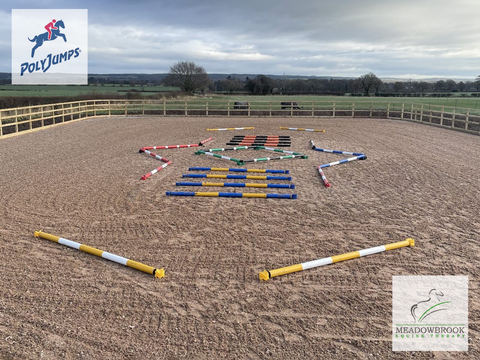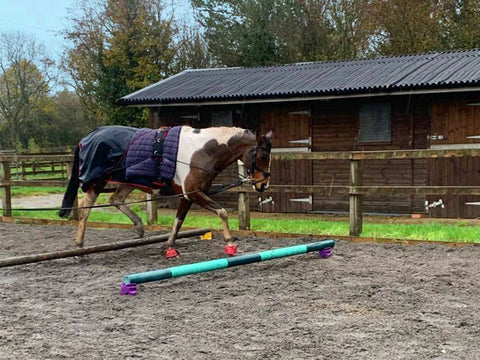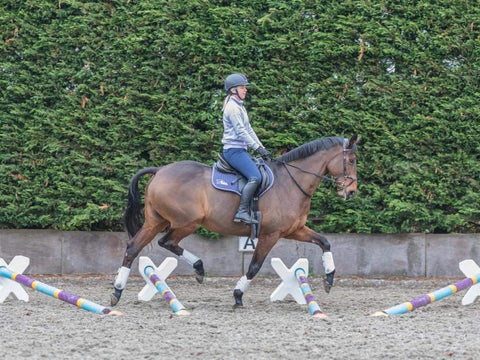Sarah Devonport | Equimotion,

Pole work for horses is a fantastic way to improve natural balance and self-carriage. Your horse will be more willing and able to move forward and be more assured in his stride if he is happy in his own body. You will also find that you will build a very strong bond with your horse which will give you both confidence going forward and will also transfer into your ridden work.
Problems can occur when a horse is repetitively worked or trained in the same way over a period of time, this can lead to injuries due to the repetitive strain and over-working of tired muscles with the result being a lack of strengthening and either a complete lack of improvement in the horse’s way of going or even a backwards step in their training or behaviour.
Using pole work as a means of identifying where the horse naturally wants to put himself can really show up the horses’ weaknesses or issues. You will learn if your horse is left or right sided, Is your horse straight? Does he struggle with certain movements? and is this due to pain or strain or just because the horse does not know how to use his muscles correctly?
It is also vital that before you start pole work/groundwork training with your horse, that his body is in a position to be able to cope with the sessions. Using a manual therapist, for example Equine Sports Massage or other modalities will enable your horse to perform the exercises more correctly to begin with and progress will be made far easier. Tense, tight and sore muscles or poor posture will hinder progress.
Pole work can be used on a daily basis to “Injury Proof” your horse and is ideal for building strength and for rehabilitation cases. Frequent use of this training can also rebuild neuromuscular pathways that have become misused. Correct movement patterns repeated will retrain the brain to remember the movement patterns.
The pole work exercises are best used in hand and in walk to begin with, as this is far more difficult and highlights where the horse is struggling. (If the horse struggles to perform the exercises in walk, they won’t do them very well in trot either!)
TOP TIPS
- Walk is by far the most effective pace to perform the groundwork/pole work in as there is no moment of suspension (unlike trot/canter), so each movement is achieved through muscular effort.
- Always, always warm your horse up for 10 mins before you begin with the poles. Working your horse in hand around the poles is a great way to achieve this.
- The closer the poles are together (if the horse is going over them), the more the horse must “sit” and push from behind. Alternatively, the further away the poles are set apart, the more the horse has to increase the length of his stride.
- Working your horse over or around poles in hand and without a rider or saddle allows the horse to move through his back and core without restriction or possible hinderance from the rider. It is also beneficial for the handler to see how the horse is moving from the ground.
- Remember, less is more!! You are better doing 4-5 lighter sessions throughout the week rather than 1 big, tiring session. You’ll be surprised how both physically and mentally tiring this type of work is for the horse.
- Repeat exercises equally on both reins and learn to lead your horse from both sides, this is really important.
- Always allow a stretch and small break between exercises for your horse to “process” what he has just done.
- Please don’t be tempted to use gadgets, your horse doesn’t need them, he will learn to balance himself without and will be able to make use of his whole body without interference.
- Always remember to cool down afterwards, again, working your horse around the poles to finish is ideal.





Comments (0)
There are no comments for this article. Be the first one to leave a message!